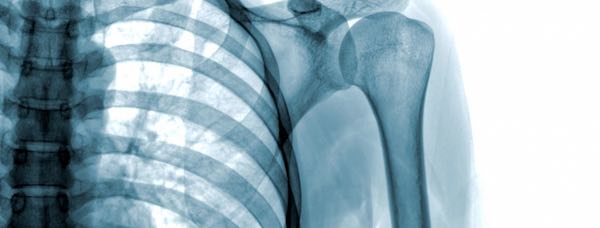Imaging Insights: Interview with Greg Karnaze, M.D., F.A.C.R.
Since his residency with Mayo Graduate School, Dr. Greg C. Karnaze, M.D., F.A.C.R., has been a radiologist for 34 years. He specializes in vascular radiology, interventional radiology, interventional ongcology, and diagnostic radiology. He has been President of the Austin Radiological Association for more than 32 years. Below, we talk with Dr. Karnaze about working in radiology.
PhysEmp: What drew you to the field of radiology?
Greg Karnaze, M.D.: When I went into radiology, some of the most exciting advances in medicine were happening in imaging and this continued for decades. For example, CT, MRI and ultrasound revolutionized the way diagnoses are made. There were conditions that used to require exploratory laparotomies for diagnosis that now are diagnosed with imaging. There were conditions that couldn’t be diagnosed until they were at a very advanced stage.
PE: What do you find the most fulfilling thing about working in radiology?
GK: Imaging is integral to all types of medicine these days. There really isn’t any specialty that doesn’t rely on imaging for diagnosis and follow-up with patients. It’s just integral to all current medicine and surgery.
One thing about being a radiologist is that you are a consultant to other physicians. A lot of our interaction is with other doctors. Some people will use the term “a doctor’s doctor.” We’re answering a lot of questions and assisting with diagnoses with other physicians. Less of our interaction is directly with patients—although I do interventional radiology, so I have both of those types of interactions.
PE: Can you talk about the difference between those two types of radiology?
GK: In interventional radiology, we use imaging guidance to do minimally invasive procedures, things like angiography, angioplasty. We do a whole host of procedures that use imaging guidance that used to require surgery but now can be done in a more minimally invasive fashion.
We don’t do the heart—cardiologists do the heart—but in terms of intervention throughout the body, we do everything else. This includes angiography, arterial & venous angioplasties and stent placement, interventional oncology, biopsies, biliary and renal drainage procedures, venous access procedures, etc.
PE: What are some of the challenges of working in radiology?
GK: I think with all medicine, the biggest challenges are keeping current and knowing what is applicable in different situations. That’s why radiology has really become subspecialized. Everybody in our practice has done not just a residency, but an additional one- or two-year fellowship, to subspecialize in some various aspect of radiology, whether it’s interventional radiology, musculoskeletal, neuroradiology, pediatric imaging, women’s imaging or body imaging, there are a whole host of subspecialties. Our group only hires people who have done fellowships beyond their residency.
PE: Over the years, you’ve no doubt seen some big changes in healthcare policy—such as ObamaCare. How have these changes impacted the field of radiology?
GK: Many of the changes in healthcare policy have resulted in increased regulation and decreased reimbursement. Patients enrolled in Health Care Exchange plans have narrower networks & higher deductibles; they have less choice. Radiology is fairly compensated—or has been fairly compensated—but it has been attacked by the government for almost the last decade. The reason is because of all the innovations that have happened in imaging, there has been a significant increase in utilization of imaging. A lot of that was warranted and some of it was not.
Some of it was driven by referring physicians who were in joint ventures, or had ownership interest in their own imaging equipment. Some of it was due to defensive medicine out of emergency rooms and so on. And a lot of it was due to the fact that imaging was offering diagnoses that weren’t possible before. But all those things contributed to a dramatic increase in the rise of the amount of dollars that were expended towards imaging, and that caught the attention of government regulators and insurance companies. And so there was legislation over the last decade that has continually ratcheted down reimbursement for imaging.
Imaging utilization has been flat since about the Great Recession in 2008. There has not been an increase in imaging in quite a few years; in fact, in many parts of the country, the imaging volume has declined over that period of time.
PE: How is the field of radiology different for today’s graduates?
GK: Radiology residencies have historically been able to attract some of the best and brightest out of medical school classes because it was a very challenging and progressive field. As there has been declining reimbursement due to insurance company reimbursement, government regulation, and Medicare reimbursement, it’s becoming harder to attract some of the top students of medical school classes. I think last year for example, some positions went unfilled in several radiology residencies around the country.
Medical students read the tea leaves. They tend to go to the area where they think they’re going to have a profession that’s fulfilling and stimulating and also one that’s going to provide them with a lifestyle they’re going to be comfortable with. But if you talk to recruiters today, I think you’ll find the job market in radiology has gotten pretty tough over the last couple of years. This year is better than last year, so I think we’re coming out of that.
PE: That’s good to hear. So there’s hope on the horizon then?
GK: I think so, yes.





I appreciate your comment about how radiology can be used for multiple types of procedures; normally ones that are invasive. I also like how you said that it could be helpful when working with one’s heart. My sister may need visual radiology done, so we are looking into health care clinics. Thanks for the post.